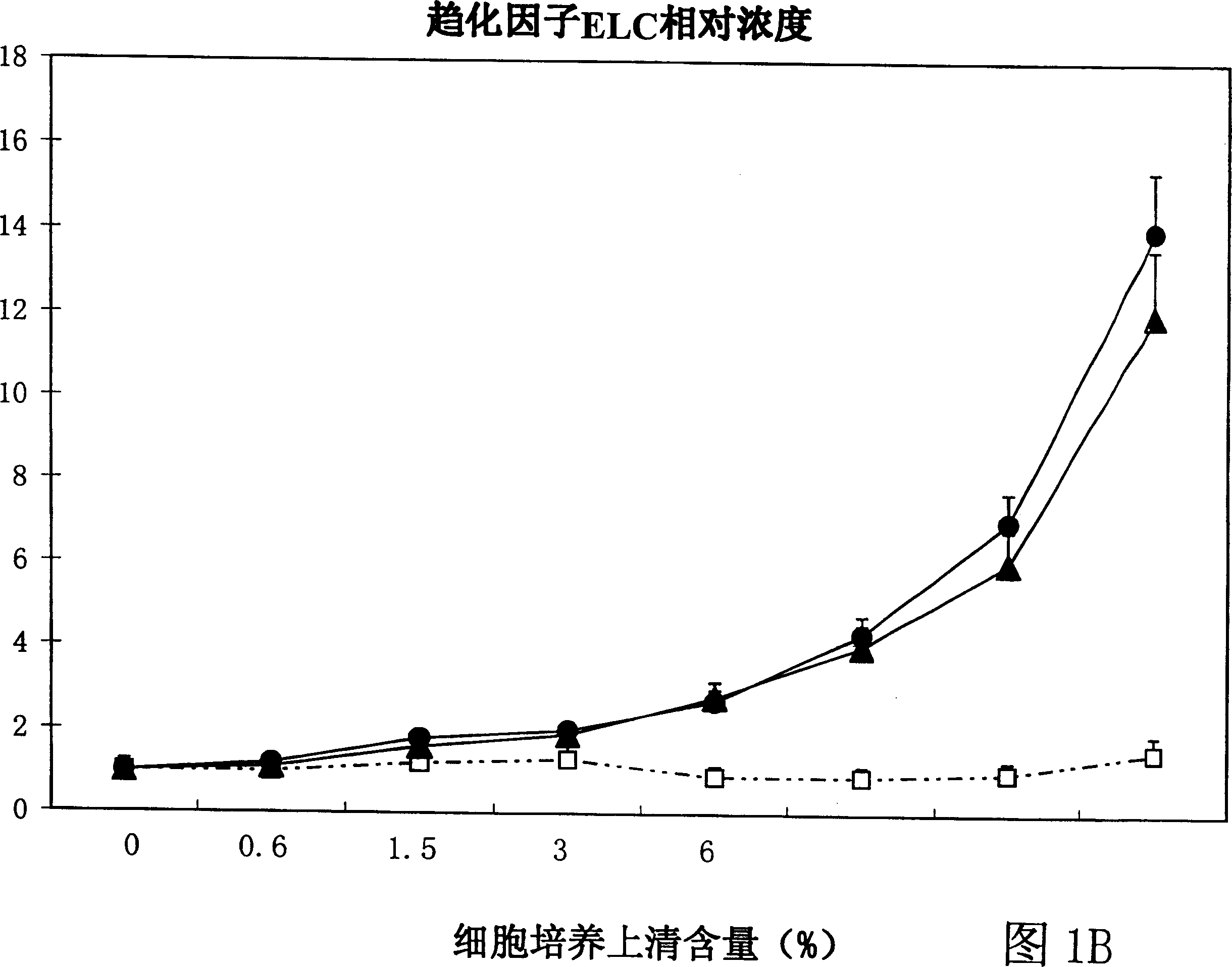Natural killer cell for transgenic expression cell chemotactic factors
A natural killer cell, chemokine technology, applied in gene therapy, genetic engineering, plant genetic improvement and other directions, can solve the problem of inaccessible parts of the disease, and achieve the effect of increasing the probability of killing, reducing the loss and improving the effect.
- Summary
- Abstract
- Description
- Claims
- Application Information
AI Technical Summary
Problems solved by technology
Method used
Image
Examples
Embodiment 1
[0073] Example 1: Clone the human chemokine SDF-1 gene fragment and the SDF-1P2G gene fragment transformed from SDF-1 and construct the expression vector of the above fragments.
[0074] RNA was prepared from human vascular endothelial tissue according to the Trizol method. The mRNA was converted into a cDNA library by reverse transcription biochemical reaction. A set of primers was designed as follows: 5' primer, 5'-TTGCTAGCTCCACCATGAACGCCAAGGTC and 3' primer, 5'-TACAAGCTTGCCATCTTGAACCTCTTGTTTAA. This method was used to obtain the cDNA of the chemokine SDF-1 including the leader sequence. The cDNA of SDF-1 is cloned into a plasmid vector such as PCR2.1 vector (INVITROGEN). In order to obtain the nucleic acid sequence of SDF-1P2G, the gene of SDF-1 was transformed into the sequence ND by using the gene mutation method. 2, namely SDF-1P2G. Then, the above-mentioned SDF-1 and the transformed SDF-1P2G gene fragments are respectively connected to the expression vector through r...
Embodiment 2
[0077] Example 2: Transduction of natural killer cell lines with chemokine SDF-1 and ELC genes and their expression.
[0078] The specific method is as follows: linearize the DNA of the grafted chemokine gene vector, SDF-1-pcDNA3.1 and ELC-pcDNA3.1 plasmid vector with a restriction endonuclease, and transfer it into a natural killer cell line by electric shock In NK92 cells: Prepare 1X10 7 NK-92 cells were resuspended in 10 μl of phosphate buffered saline and 90 μl of the solution provided by AMEXA. Add 5 µg of DNA and mix with cells. The carrier DNA was transferred into NK-92 cells by electroporation using AMEXA's electroporation instrument. Incubate at 37°C for 10 minutes and then switch to CO 2 Incubator for 4 hours. Since the vector has an anti-Gentamycin gene, Gentamycin was used to screen the expression of the vector. After 4 weeks of screening with Gentamycin (4 mg / ml), most of the cells died, and only a few cells survived. Thus, a stable expression cell line was o...
Embodiment 3
[0081] Example 3: Comparison of the growth curves of the natural killer cell line transfected with the SDF-1 gene and the original natural killer cell line.
[0082] In order to determine whether the natural killer cell NK-92 with transchemokine gene is different from the original NK-92 cell line, the growth rate of the two cell lines of NK-92 transfected with SDF-1 gene and the original NK-92 was first compared Compared with the morphology, as shown in Figure 2, under the culture conditions containing the lymph interleukin IL-2, the growth speed of the two cell lines of NK-92 and the original NK-92 with the SDF-1 gene were basically the same, Divide about once every 24 hours. In the absence of lymph interleukin IL-2, both the NK-92 and the original NK-92 cell lines transfected with SDF-1 gene cannot grow and divide (using 3 H-TdR labeling test confirmed, the results are not shown here), this test shows that transfection of SDF-1 gene did not change the dependence of natural k...
PUM
 Login to View More
Login to View More Abstract
Description
Claims
Application Information
 Login to View More
Login to View More - R&D Engineer
- R&D Manager
- IP Professional
- Industry Leading Data Capabilities
- Powerful AI technology
- Patent DNA Extraction
Browse by: Latest US Patents, China's latest patents, Technical Efficacy Thesaurus, Application Domain, Technology Topic, Popular Technical Reports.
© 2024 PatSnap. All rights reserved.Legal|Privacy policy|Modern Slavery Act Transparency Statement|Sitemap|About US| Contact US: help@patsnap.com










